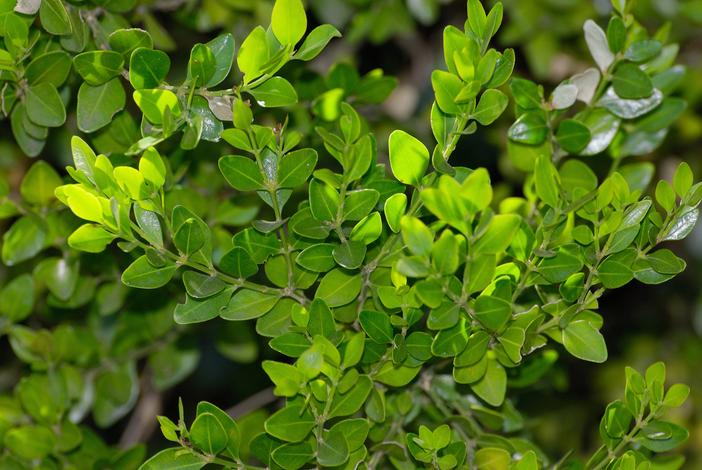Cape Box
(Buxus macowanii)
Cape Box (Buxus macowanii)
/
/

Dr. Johann C. Knobel
CC BY-SA 3.0
Image By:
Dr. Johann C. Knobel
Recorded By:
Copyright:
CC BY-SA 3.0
Copyright Notice:
Photo by: Dr. Johann C. Knobel | License Type: CC BY-SA 3.0 | License URL: https://creativecommons.org/licenses/by-sa/3.0 | Uploader: JMK | Publisher: Wikipedia Commons














Estimated Native Range
Summary
Buxus macowanii, commonly known as Cape Box, is an evergreen shrub or small tree native to the Afromontane forests and shady ravines of South Africa, specifically from the Eastern Cape to southern KwaZulu-Natal, and extending to the Waterberg region in Limpopo. It typically grows to a height of 10 meters (33 feet) with a dense, rounded form. The leaves are small, glossy, and oval-shaped, providing a lush green appearance throughout the year. The inconspicuous flowers are pale green and give way to small, spherical fruit that are not particularly ornamental. The wood of Cape Box is hard and fine-grained, making it valuable for detailed woodworking such as engraving.
Cape Box is appreciated for its dense foliage and slow growth, which makes it ideal for formal hedges, topiary, and as a specimen in residential gardens. It thrives in well-drained, loamy soils and prefers a position with partial shade to full sun. Regular watering is necessary, especially during dry periods, but the plant is relatively low maintenance once established. In cultivation, it is important to monitor for box blight and box tree moth, which can cause significant damage. Cape Box is not known to be invasive outside its native range, but gardeners should always be mindful of the potential for any non-native species to become problematic in a new environment.CC BY-SA 4.0
Cape Box is appreciated for its dense foliage and slow growth, which makes it ideal for formal hedges, topiary, and as a specimen in residential gardens. It thrives in well-drained, loamy soils and prefers a position with partial shade to full sun. Regular watering is necessary, especially during dry periods, but the plant is relatively low maintenance once established. In cultivation, it is important to monitor for box blight and box tree moth, which can cause significant damage. Cape Box is not known to be invasive outside its native range, but gardeners should always be mindful of the potential for any non-native species to become problematic in a new environment.CC BY-SA 4.0
Plant Description
- Plant Type: Tree, Shrub
- Height: 3-6 feet
- Width: 3-6 feet
- Growth Rate: Slow
- Flower Color: N/A
- Flowering Season: Spring
- Leaf Retention: Evergreen
Growth Requirements
- Sun: Full Sun, Part Shade
- Water: Medium
- Drainage: Medium
Common Uses
Border Plant, Low Maintenance, Potted Plant
Natural Habitat
Afromontane forests and shady ravines
Other Names
Common Names: Cape Box, Pondo Boxwood
Scientific Names: , Buxus macowanii, Buxella macowanii, Notobuxus macowanii,
GBIF Accepted Name: